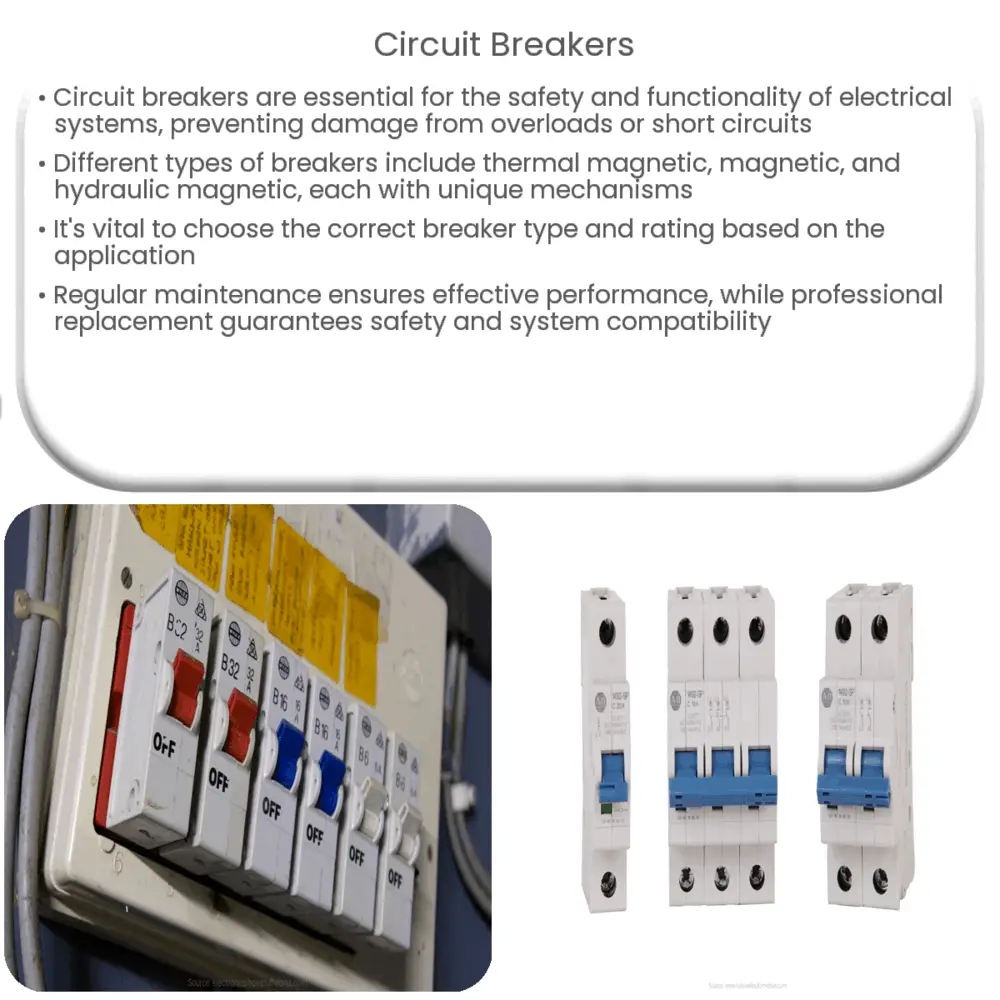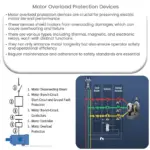Explore the role, types, functioning, and maintenance of circuit breakers in safeguarding electrical systems.

Understanding Circuit Breakers
Circuit breakers play an essential role in the safety and functionality of modern electrical systems. These automatic electrical switches are designed to protect an electrical circuit from damage caused by an overload or a short circuit. Their primary function is to detect a fault condition and, by interrupting continuity, to immediately discontinue electrical flow.
The Role and Importance of Circuit Breakers
In an electrical system, the possibility of damage due to excess current or short circuit is always a risk. When an anomaly in the flow of current is detected, the circuit breaker’s role is to safeguard the system by interrupting the current flow. Without circuit breakers, the risk of electrical fires and other hazards would increase significantly, putting both lives and infrastructure at risk.
Types of Circuit Breakers
- Thermal Magnetic Circuit Breakers: These are the most common type found in residential homes. They use a bimetallic strip, which heats and bends to trip the switch when there is an overload.
- Magnetic Circuit Breakers: These use a solenoid, whose magnetic field strength increases with the current. When the current exceeds the breaker rating, the magnetic field strength is strong enough to trip the breaker.
- Hydraulic Magnetic Circuit Breakers: These use a fluid-filled tube and a magnetic slug to measure the flow of current. When the current becomes too strong, the fluid heats and expands, moving the slug to trip the breaker.
Functioning of Circuit Breakers
The working principle of a circuit breaker varies depending on its type, but the basic mechanism is the same. When a fault, such as an overload or a short circuit, is detected in the circuit, the circuit breaker responds. In thermal magnetic breakers, the bimetallic strip bends due to the heat produced by the excess current, releasing the spring mechanism that trips the breaker. Magnetic breakers and hydraulic magnetic breakers, on the other hand, use the magnetic field strength to move a tripping mechanism.
Specifications and Ratings
Circuit breakers come in different sizes, specifications, and ratings. The specifications usually indicate the maximum current that a circuit breaker can safely handle. Once the current flow goes beyond this rating, the circuit breaker is designed to trip, thus preventing damage to the circuit and connected devices. It is crucial to ensure that the ratings and specifications are carefully considered when selecting and installing circuit breakers.
Factors to Consider when Selecting a Circuit Breaker
Selecting the right circuit breaker is crucial in ensuring the safety and efficiency of an electrical system. Here are a few factors that need to be considered:
- Type of Circuit Breaker: The choice of the circuit breaker type depends on the application and location. For residential use, a thermal magnetic breaker is typically adequate, while for industrial uses, magnetic or hydraulic magnetic breakers might be more appropriate.
- Current Rating: This rating indicates the maximum current that the circuit breaker can handle without tripping. This must be higher than the total current of all devices connected to that circuit.
- Interrupting Rating: This is the maximum current that the circuit breaker can safely interrupt without damage. It should be higher than the highest possible fault current in the system.
Regular Maintenance of Circuit Breakers
Regular maintenance of circuit breakers is essential to ensure that they perform their protective function effectively. This maintenance includes cleaning, tightening connections, and performance testing. Regular inspection can identify issues early, helping prevent serious damage or accidents.
Replacing a Circuit Breaker
When a circuit breaker fails or becomes obsolete, it is important to replace it promptly. A professional should perform replacement to ensure it is done correctly and safely. The replacement circuit breaker should match the specifications of the previous one to ensure compatibility with the electrical system.
Conclusion
In summary, circuit breakers are crucial components in any electrical system, offering protection against overloads and short circuits. They come in various types, each suitable for specific applications. Whether it’s in residential homes, commercial establishments, or industrial facilities, the right choice, installation, and maintenance of circuit breakers ensure that electrical systems function safely and efficiently. As technology advances, circuit breakers continue to evolve, offering even greater levels of safety and adaptability to the demands of modern electrical systems.




